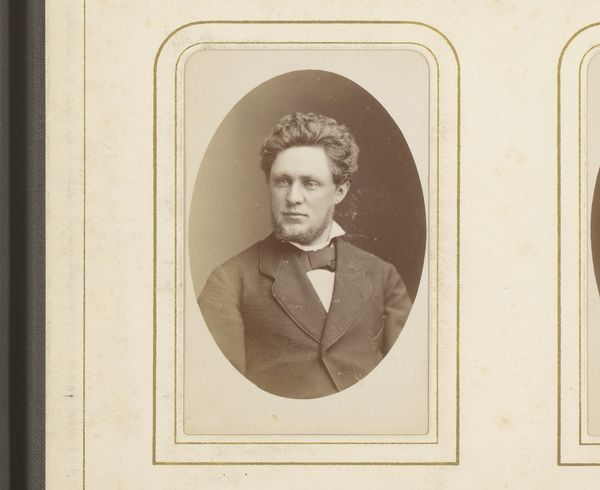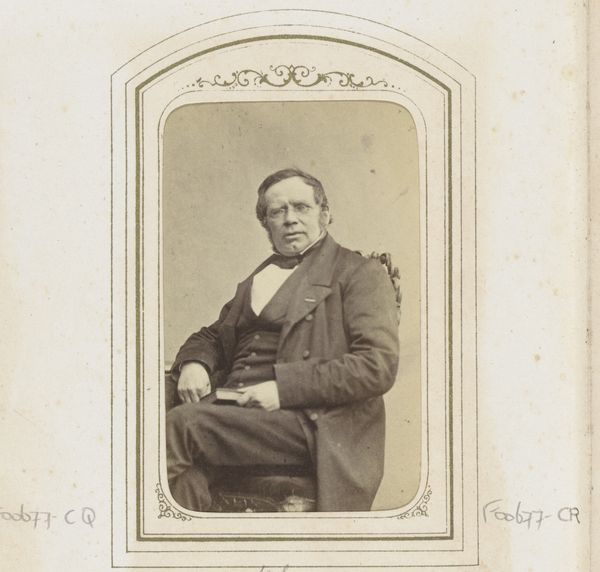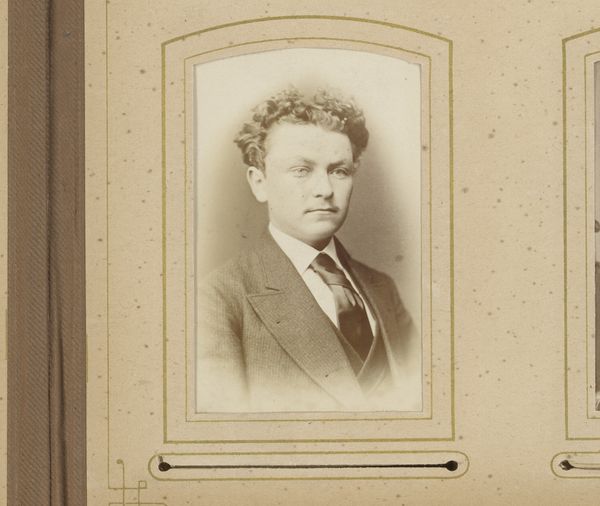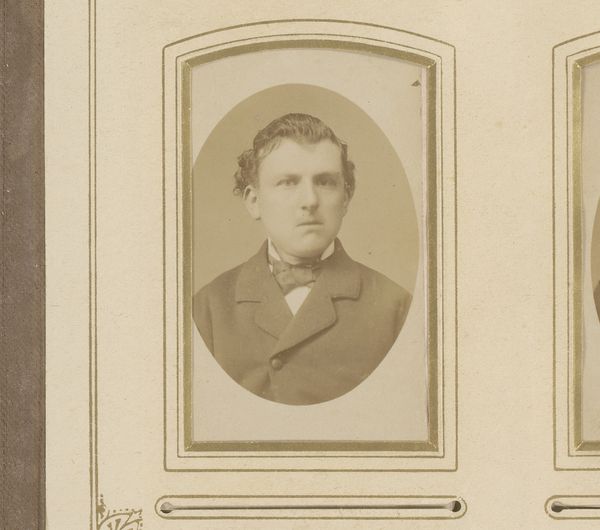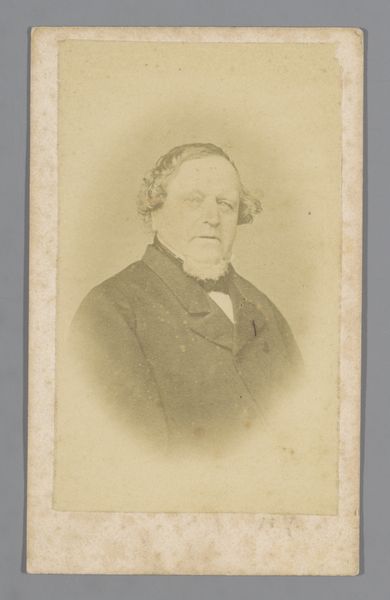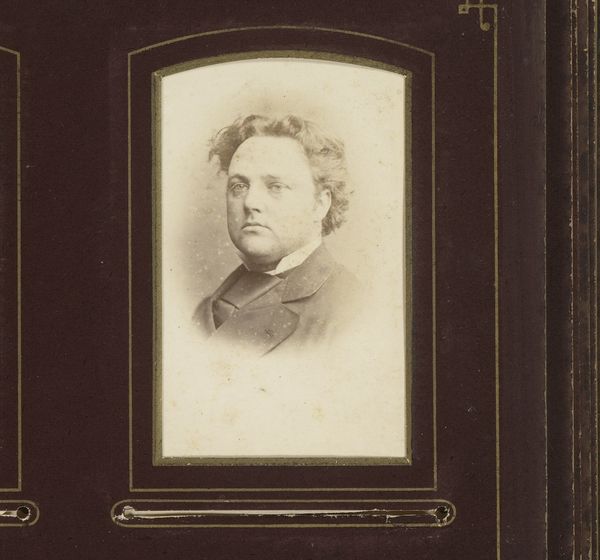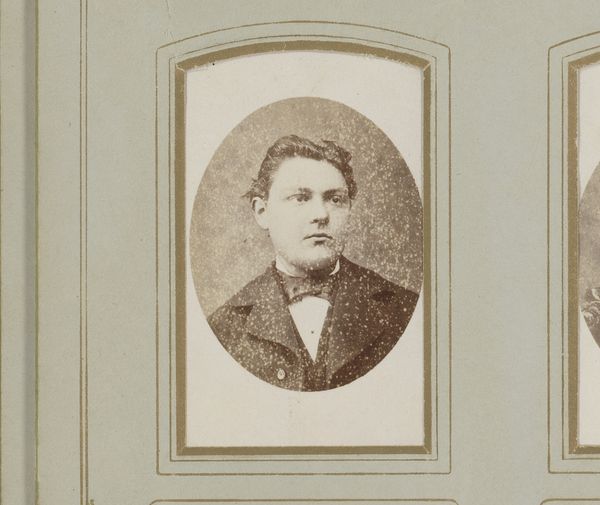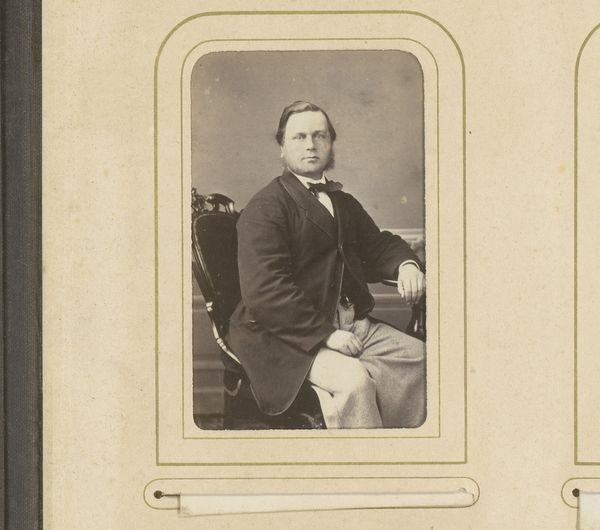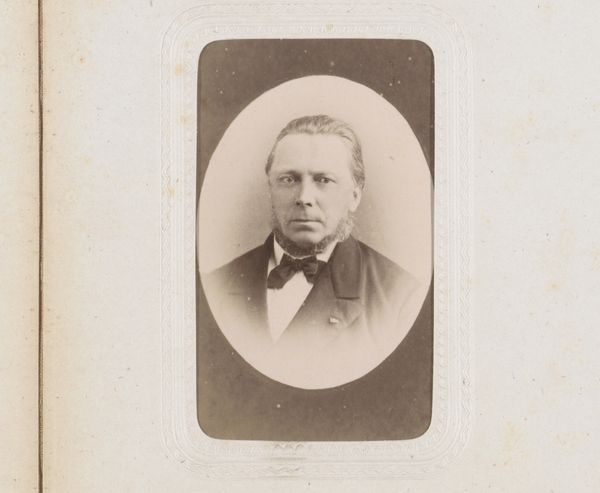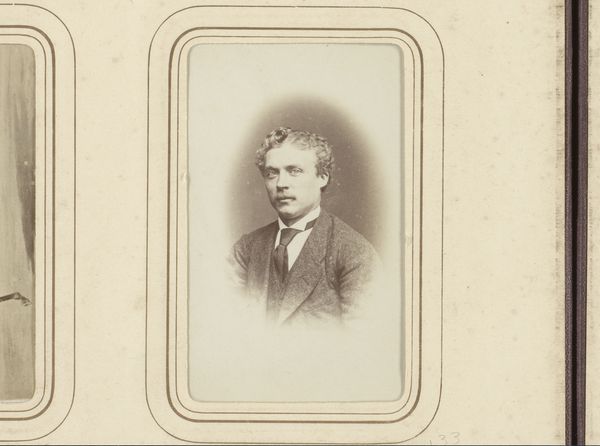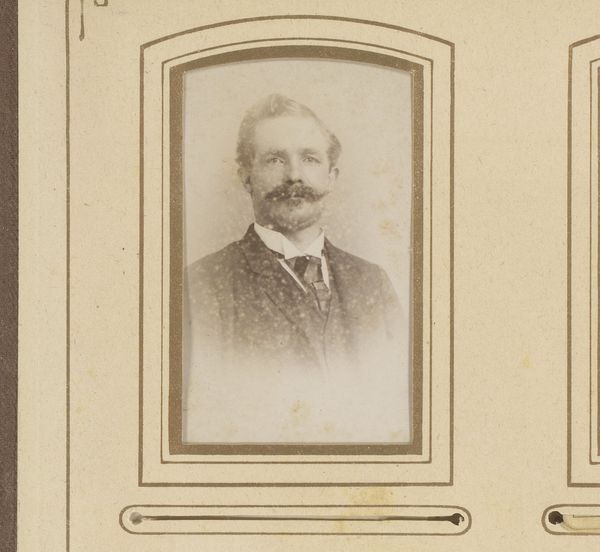
daguerreotype, photography
#
portrait
#
daguerreotype
#
photography
#
realism
Dimensions: height 85 mm, width 53 mm
Copyright: Rijks Museum: Open Domain
Curator: Let's consider this compelling daguerreotype, "Portret van een man" – Portrait of a Man – captured sometime between 1861 and 1874. The artist is known to us only as Albert Greiner, and the piece resides here at the Rijksmuseum. Editor: My initial impression is one of determined resolve. His direct gaze and the rigid formality of the pose suggest a man very conscious of his societal position. Curator: Note the careful construction of light and shadow. Greiner uses them to model the subject's face, emphasizing its planes. The symmetrical framing device isolates the figure and presents it as an artifact for analysis. It adds to the stillness and severity. Editor: It is a calculated assertion of identity. Beyond the technique, think of the social symbols at play here. His tailored jacket, and neat cravat -- they represent civic and perhaps even economic power. He is clearly communicating a specific idea of himself. Curator: Agreed. Further examination reveals a delicate tonality despite the medium's limitations. There's a nuanced control of gradation. He balances formal rigidity with areas of deliberate softness, see around the hair and collar for instance. It hints at the sitter's underlying humanity. Editor: But is it just ‘humanity’? Given the time, isn’t there a tacit assertion of man's mastery – his self-control against the untamed world? Early photography like this often echoes Enlightenment ideals of rational dominance. Even those loose locks seem deliberately styled, tamed. Curator: That may very well be. Certainly the piece is carefully balanced, spatially, conceptually. Editor: A statement, meticulously rendered, carefully preserved. It gives a strange window into the psyche of that age. Curator: Indeed, an insight articulated through formal restraint and tonal nuance. It leaves one to imagine at this historical intersection what his role may have been, or at the very least the identity he wanted to present.
Comments
No comments
Be the first to comment and join the conversation on the ultimate creative platform.
